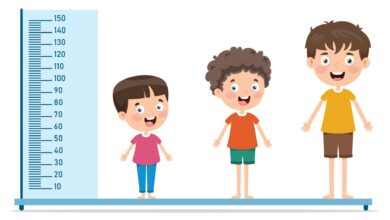Full Stop Punctuation

Full Stop Punctuation Answer: A full stop is a punctuation mark (.) used to signal the end of a sentence. It indicates a pause longer than that signified by a comma or a semicolon, marking the conclusion of a statement or thought. Full stop is one of the most fundamental elements of written language. Its role in punctuation is crucial for clarity and understanding in written communication. Full Stop Punctuation
What is Full Stop Punctuation?
A full stop (or period) is a dot-like symbol (.) you put at the end of a sentence. It’s mainly used when you finish a regular statement or a command. This dot tells you to pause longer than you would for a comma or a semicolon. It also shows you’ve finished one idea and are moving to another. Full Stop Punctuation
Different dictionaries explain a full stop similarly. The Oxford Learner’s Dictionary says it’s used at the end of a sentence to show there’s nothing more to say about the topic. Merriam-Webster calls it a point to mark a sentence’s end or an abbreviation. The Cambridge Dictionary describes it as a symbol used at the end of a sentence or a shortened word. The Collins Dictionary explains it as the punctuation mark at the end of a sentence that is not a question or exclamation. Full Stop Punctuation
When to use a Full Stop?
Using a complete stop or a period is straightforward, but there are some important rules to remember:
- End of a Sentence: Use a full stop at the end of a complete sentence, a statement or a command. It signals that the sentence is finished.
- After Abbreviations: Place a full stop after certain abbreviations. For example, “Dr.” for Doctor or “e.g.” for “for example”.
- No Extra Punctuation: Don’t add punctuation marks after a complete stop. For instance, avoid writing “She went to the store..”.
- Capitalization: The next word after a full stop should start with a capital letter unless it’s a proper noun that’s always lowercase.
- Space After Full Stop: Always leave a space after a complete stop before starting the following sentence.
- Not for Questions or Exclamations: Don’t use a complete stop at the end of a sentence that’s a question or an exclamation. Use a question mark or exclamation mark instead.
- In Direct Speech: When writing dialogue, the full stop falls inside the quotation marks if the quote is a complete sentence.
- Avoid in Titles and Headings: Generally, don’t use a complete stop in titles, headings, or subheadings.
- Decimal Points: Full stops are also used as decimal points in numbers (e.g., 3.14).
- Not for Bullet Points: Usually, you only need a complete stop at the end of bullet points if they are complete sentences.
Full stops are crucial for clear and effective written communication, helping convey the right pace and tone. Full Stop Punctuation
Examples of Using a Full-Stop
Here are some examples to illustrate how to use a full stop:
End of a Statement:
- “She bought a new car.”
- “The sky is clear tonight.”
End of a Command:
- “Close the door.”
- “Please finish your work by noon.”
After Abbreviations:
- “He moved to the U.S. last year.”
- “Her name is Elizabeth, but she prefers Liz.” Full Stop Punctuation
In Direct Speech:
- She said, “I’ll be home by 8 p.m.”
- “I can’t believe it’s already Friday,” he exclaimed.
Not for Questions or Exclamations (for comparison):
- Incorrect: “Are you coming over today.”
- Correct: “Are you coming over today?”
Decimal Points:
- “The total cost is $45.50.”
- “He ran the race in 9.87 seconds.”
Space After a Full Stop:
- Correct: “I went to the store. I bought apples.”
- Incorrect: “I went to the store.I bought apples.”
In Titles and Headings (for comparison):
- Incorrect: “The History of the World.”
- Correct: “The History of the World” Full Stop Punctuation
These examples show how full stops are used in different contexts to mark the end of sentences clearly or to punctuate abbreviations. Remember, the full stop is one of the most straightforward yet powerful punctuation tools.
Full Stop Punctuation Winter is here, and so is the time to skill up! More than 5,000 learners have now completed their journey from the basics of DSA to advanced-level development programs such as Full-Stack, Backend Development, and Data Science. Full Stop Punctuation
And why go elsewhere when our DSA to Development: Coding Guide will help you master all this in a few months? Please apply now to our DSA to Development Program, and our counsellors will connect with you for further guidance & support.




